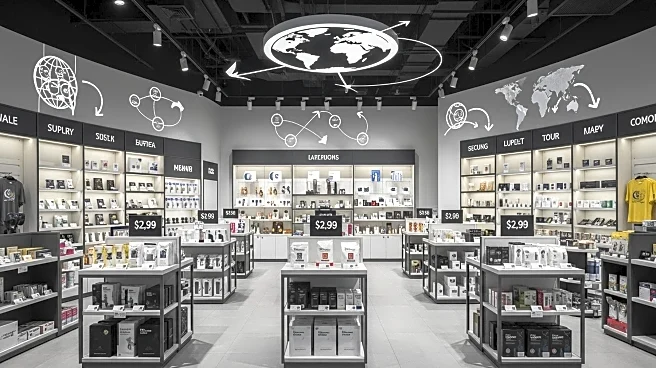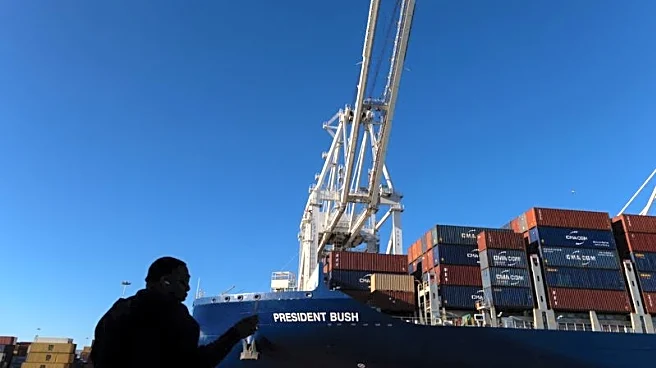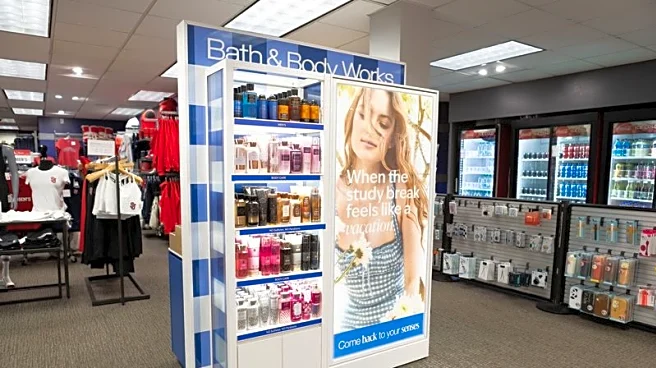What's Happening?
The U.S. retail sector is experiencing significant pressure due to increased tariffs, which have surged to 18.3%, the highest since 1934. This has led to structural inflation and compounded cost pressures for retailers, with the average household facing an annual loss of $2,400 due to tariff-driven inflation. Sectors such as apparel and electronics are particularly vulnerable, with apparel prices remaining 17% above pre-tariff levels. Retailers are diversifying supply chains and adopting dynamic pricing to offset these costs. For instance, Best Buy has reduced its reliance on China from 60% to under 25% by 2026, while Walmart has negotiated price cuts from Chinese manufacturers and expanded partnerships in Southeast Asia.
Why It's Important?
The increased tariffs have significant implications for the U.S. economy, with real GDP growth projected to be 0.5 percentage points lower annually due to 2025 tariffs. This results in the economy being persistently 0.4% smaller in the long run, equivalent to $120 billion annually. Retailers face sustained pressure on margins and must continuously innovate in cost management. Companies that demonstrate agility in supply chain diversification, dynamic pricing, and operational flexibility are better positioned to outperform peers. Conversely, those slow to adapt, particularly in rigid sectors like electronics, risk eroding market share.
What's Next?
Retailers are expected to continue diversifying their supply chains and leveraging advanced technologies like AI and machine learning to optimize pricing decisions. Operational agility will be crucial, with strategies such as shortening supply lead times and building inventory buffers to respond to tariff volatility. Investors should prioritize companies that have proactively embraced these strategies to ensure competitiveness in the global market.













